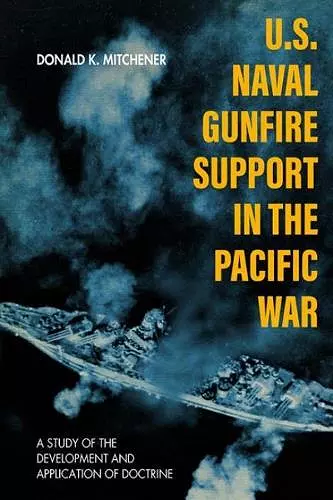U.S. Naval Gunfire Support in the Pacific War
A Study of the Development and Application of Doctrine
Format:Hardback
Publisher:The University Press of Kentucky
Published:28th Jul '21
Currently unavailable, and unfortunately no date known when it will be back

On November 20, 1943, the United States invaded the Tarawa Atoll of the Gilbert Islands as part of the first American offensive in the Central Pacific region during World War II. This invasion marked more than one first, as it was also the introductory test of a doctrine developed during the interwar years to address problems inherent in situations where amphibious assaults require support by naval gunfire rather than land-based artillery.
In this detailed study, Donald K. Mitchener documents and analyzes the prewar development of this doctrine as well as its application and evolution between the years 1943--1945. The historical consensus is that the test at Tawara was successful and the experience increased the efficiency with which U.S. forces were able to apply the doctrine in the Pacific theater for the remainder of the Second World War. Mitchener challenges this view, arguing that the reality was much more complex. He reveals that strategic concerns often took precedence over the lessons learned in the initial engagement, and that naval planners' failure to stay up to date with the latest doctrinal developments and applications sometimes led them to ignore these lessons altogether.
Though the weapons, techniques, and strategies of the U.S. armed forces have changed dramatically over the years, Mitchener compellingly argues that a nuanced understanding of the historical application of doctrine is necessary in order to protect soldiers' and sailors' lives. U.S. Naval Gunfire Support in the Pacific War presents an important analysis that highlights the human cost of misinterpreting strategic and tactical realities.
ISBN: 9781949668124
Dimensions: unknown
Weight: unknown
324 pages